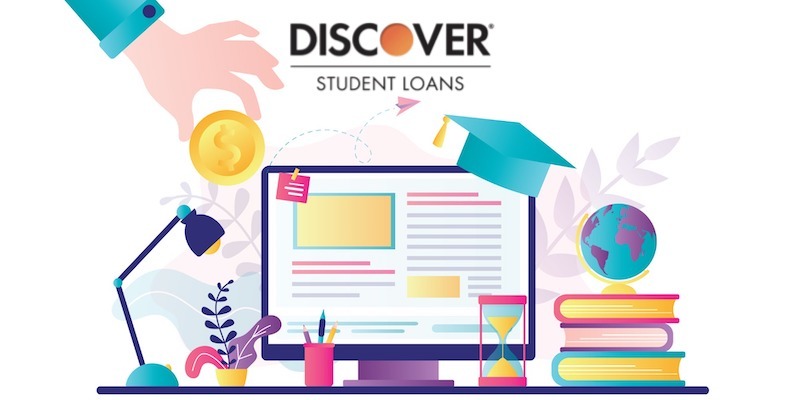Introduction
Student loans are a reality for millions of graduates across the United States. While they serve as a bridge to educational advancement, repayment can become a burden over time—especially when faced with high interest rates or inflexible terms. Fortunately, student loan refinancing has emerged as a strategic solution to manage student debt more effectively. Among the institutions offering this service, Discover Bank stands out as a reputable lender known for transparent terms and solid customer service.
This comprehensive article delves into Discover Bank’s student loan refinance program, examining its features, eligibility criteria, advantages, potential drawbacks, and how it compares to competitors. Whether you’re a recent graduate or have been making payments for years, understanding your refinancing options can be key to long-term financial well-being.
1. What Is Student Loan Refinancing?
Student loan refinancing involves taking out a new loan with a private lender to pay off existing federal or private student loans. The new loan often comes with a lower interest rate or better repayment terms, helping borrowers save money or simplify their monthly payments.
Refinancing is typically suitable for borrowers who:
-
Have improved their credit score since taking the original loan
-
Have stable income and employment
-
Are looking to reduce interest or pay off debt faster
Discover Bank offers refinancing exclusively for private student loans, as federal loans lose certain protections when refinanced through a private lender.
2. Overview of Discover Bank
Discover Bank is a division of Discover Financial Services, widely known for its credit cards and online banking services. In addition to personal banking and lending products, Discover provides both student loans and student loan refinancing, catering to undergraduates, graduates, and parents.
Their refinancing program is designed with simplicity, no application or origination fees, and a user-friendly online platform.
3. Key Features of Discover Bank Student Loan Refinance
● Loan Amounts
Discover allows borrowers to refinance the total balance of their qualified education loans, with a minimum loan amount of $5,000. There is no maximum limit, provided the borrower meets eligibility and credit criteria.
● Interest Rates
Discover offers fixed and variable interest rates. Fixed rates provide consistency in monthly payments, while variable rates may start lower but fluctuate over time. The actual rate offered depends on creditworthiness, income, and other financial factors.
● Repayment Terms
Borrowers can choose from multiple repayment terms, typically ranging from 10 to 20 years. Longer terms reduce monthly payments but may result in paying more interest over the life of the loan.
● No Fees
One of Discover’s standout features is its no-fee structure:
-
No application fees
-
No origination fees
-
No late payment penalties (though missed payments still affect credit)
-
No prepayment penalties
● Autopay Discount
Discover offers an interest rate reduction if borrowers sign up for automatic payments, encouraging timely repayment and making it easier to manage monthly budgets.
4. Eligibility Requirements
Discover’s student loan refinancing program has specific eligibility standards. While exact criteria are not publicly detailed, borrowers typically need:
-
A minimum credit score in the mid-600s or higher (stronger applicants may receive better rates)
-
A steady income source
-
A degree from an eligible institution
-
A satisfactory debt-to-income ratio
-
U.S. citizenship or permanent residency
Some borrowers may need a co-signer if they do not meet credit or income thresholds independently.
5. Application Process
The refinancing process with Discover is streamlined and fully online. It generally follows these steps:
Step 1: Check Eligibility
Borrowers can begin by using Discover’s prequalification tool, which performs a soft credit check to estimate available rates without impacting the credit score.
Step 2: Complete Application
Applicants provide details about:
-
Existing student loans
-
Personal income and employment
-
Education background
-
Financial obligations
Step 3: Submit Documentation
Supporting documents typically include:
-
Recent loan statements
-
Proof of income (e.g., pay stubs or tax returns)
-
Identification documents
Step 4: Review and Sign
Once approved, borrowers review the loan terms, accept the offer, and e-sign the agreement. Discover then disburses the new loan and pays off the previous lenders.
6. Benefits of Refinancing with Discover Bank
● Simplified Payments
Combining multiple loans into one refinanced loan means fewer monthly bills to manage and potentially lower total interest.
● No Hidden Costs
Discover’s zero-fee policy makes it easier to calculate total repayment costs without the worry of unexpected charges.
● Customer Support
Discover is known for 24/7 U.S.-based customer service and support, which can be reassuring during the application or repayment process.
● Flexible Repayment Options
With varied terms and the ability to choose between fixed or variable rates, borrowers can tailor their refinancing to fit their financial goals.
7. Potential Drawbacks
– Loss of Federal Benefits
Refinancing federal loans through Discover (or any private lender) means giving up:
-
Income-driven repayment plans
-
Federal deferment or forbearance
-
Public Service Loan Forgiveness (PSLF)
-
Emergency federal relief programs
– Strict Eligibility
Borrowers with poor credit or limited income may not qualify or may receive less favorable rates.
– No Cosigner Release Option
If you refinance with a cosigner, Discover does not currently offer a cosigner release policy, meaning the cosigner remains tied to the loan unless refinanced again.
8. Is Discover the Right Choice for You?
Discover Bank can be a strong refinancing partner for borrowers who:
-
Have mostly or entirely private student loans
-
Want to lower interest rates or change repayment terms
-
Prefer a lender with no fees
-
Value solid customer support
-
Have a strong credit profile or a qualified co-signer
It may not be ideal if you rely on federal loan benefits or are pursuing loan forgiveness programs.
9. Comparing Discover to Other Lenders
While Discover is a reputable option, it’s wise to compare multiple lenders. Consider factors such as:
-
Interest rate ranges (fixed vs. variable)
-
Loan terms and payment flexibility
-
Availability of cosigner release
-
Deferment and hardship options
-
Speed of approval and disbursement
Some competitors may offer lower rates, better support for hardship, or additional borrower perks like career coaching or financial planning tools.
10. Tips Before Refinancing
-
Check Your Credit Score: A higher score usually translates to better rates.
-
Shop Around: Get quotes from multiple lenders to find the best deal.
-
Read the Fine Print: Understand the loan terms fully, including interest capitalization and default consequences.
-
Don’t Refinance Federal Loans Lightly: Only do so if you’re sure you won’t need forgiveness or income-based options.
-
Use a Loan Calculator: Estimate total savings and monthly payments over time.
Conclusion
Refinancing student loans with Discover Bank can be a smart financial move for borrowers seeking simplicity, competitive rates, and reliable service—especially for those holding private student loans. With no fees, customizable terms, and a reputable brand name, Discover provides a refinancing experience that blends traditional bank trust with online convenience.
However, borrowers should approach refinancing thoughtfully, especially when federal student loans are involved. Understanding your goals, comparing lenders, and knowing your rights and responsibilities are essential steps in making a well-informed decision.

